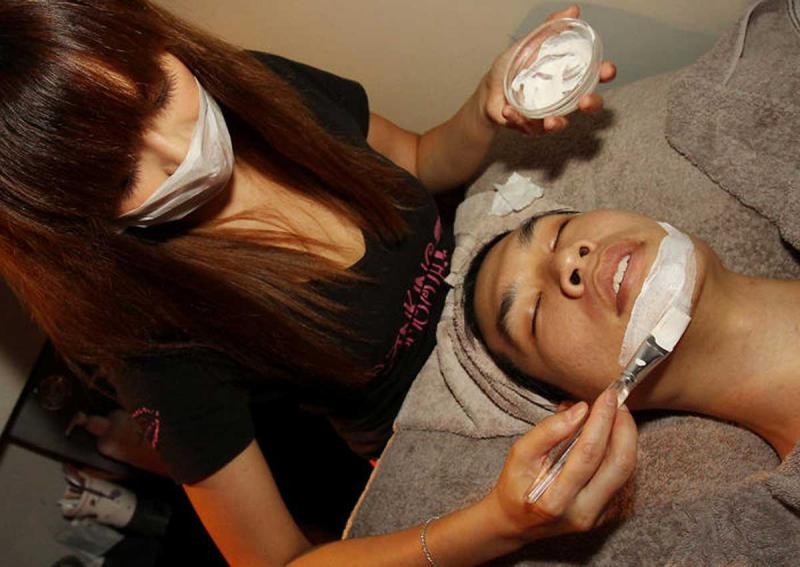3 things too many Singaporeans pay a premium for without realising

Singaporeans complain so much about not having enough money and the high cost of living that you'd think everyone was eating stale bread for dinner, with an old TV set from the 80s as their only source of entertainment.
In reality, middle income Singaporeans live quite luxuriously. Young, unmarried PMETs generally do not have to worry about paying rent, which means that no matter how much they spend, their chances of finding themselves on the streets are zero.
That frees up lots of disposable income for things that have a premium pricetag on them. However, because so many Singaporeans own the following products, people don't think twice about the fact that they're paying tons of money for them.
Apple products
Okay, I admit it, I'm a Macbook user. I won mine free in a lucky draw at a work-related D&D years ago (true story). But I will admit that after this computer dies, I will be very, very tempted to shell out big bucks on another Apple machine, despite the fact that these are some of the most expensive laptops on the market. Somehow, after 10 years of using Mac's OS, I've become convinced that any Windows computer I buy will crash and burn or slow to a crawl within a year….
Which is actually not true. The Windows system has come a long way since the early 2000s, and my friends' laptops with similar specs as mine now work just as fast, if not faster, without the deadly lags that used to plague the system.
A solid ASUS laptop with similar specs to the Macbook Pro could cost about 40 per cent less. That's hundreds of dollars for something that works just as well and doesn't require you to buy more expensive Office software.
Still, Singaporeans continue to snap up Apple products, whether they be computers, phones or tablets, despite the fact that they're so expensive compared to equivalents from other brands. I've seen countless 12 year olds with $800 iPhones and iPads, despite the fact that a Xiaomi handset or HP tablet would offer the same performance.
The disturbing thing is that so many Singaporeans buy Apple products without bothering to do research on alternatives. That means many people don't even realise that they could be getting a similar tablet, phone or computer for 30 to 60 per cent less. If you're going to pay more, at least be aware of the fact.
Facials
Admittedly, Singapore's hot and humid climate isn't the best environment for the cultivation of the silky smooth skin and tight pores our friends in Japan, Korea and Northern China enjoy.
In fact, Singaporeans have pretty much resigned themselves to the fact that they're going to have greasy skin for life. It's so much easier to suffer a break out when the only time you're pores aren't clogged with sebum and pollutants is the 5 minutes after your twice-daily showers.
This is probably why the beauty salon business is doing so well in Singapore. All over the island, from the CBD and Orchard to the HDB heartlands are chains like AsterSpring, FIL and Adonis, where women and men alike go for monthly facials, where their pimples are mercilessly attacked in a process that rivals childbirth on the pain scale.
These sessions usually cost well over $100, often creeping into the $200 range just for a basic facial. Do that every month and you're spending $2,400 a year to get someone to wash your face and squeeze your zits.
The problem with the perception that facials are essential for good skin health is that it often deters people from taking a course of action that will actually help, and probably not require monthly visits for the rest of your life-a visit to the dermatologist.
If you're suffering from acne outbreaks, this will probably help way more than any number of facial visits, and cost less too, at around $100 a visit if you go to the National Skin Centre. Go as soon as you start experiencing chronic skin problems, and not after two years of trying to cure the problem with facials.
Designer leather goods
While there are many Singaporeans who would agree that spending $300 on a cotton t-shirt is dumb, when it comes to leather goods, a surprising number of people are willing to splurge on that Louis Vuitton wallet or Prada purse.
Somehow, that is the perception that leather goods are an investment and worth spending big bucks on. And that's why so many Singaporeans, not just well-paid PMETs but also those in the service, administrative, etc line, think it's perfectly reasonable to spend $700 on a wallet, justifying their purchases with vague arguments about the workmanship and quality of the leather.
The fact is that accessories like wallets and handbags, even those that are fairly durable, can be bought relatively inexpensively. There are scores of wallets in the $30 to $100 range at all manner of stores.
But somehow, we've become so accustomed to seeing our friends whip out their Gucci / Chanel / Prada wallets that we've come to think spending more than $500 on something that does little more than contain your cash and credit cards is not only acceptable, but normal.
This article first appeared on MoneySmart.
MoneySmart.sg is Singapore’s leading personal finance portal, and aims to help people maximise their money with powerful tools and engaging content.